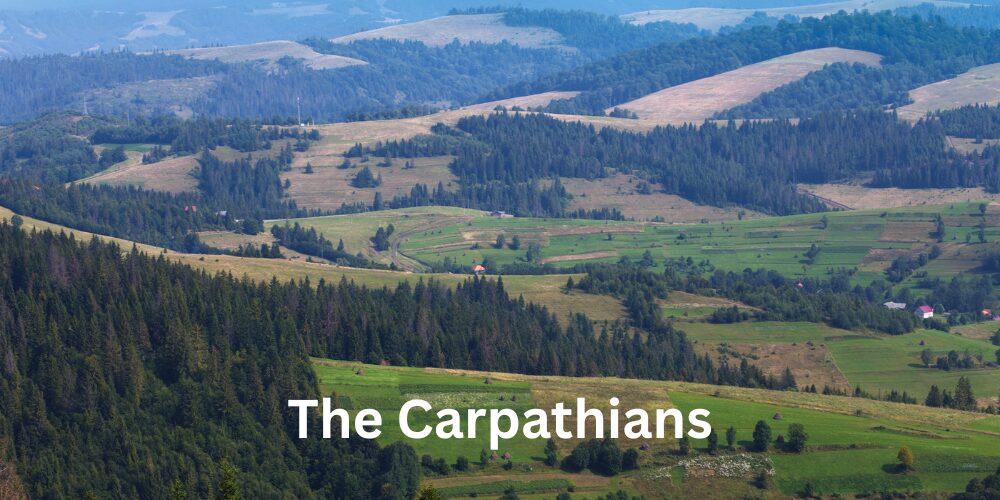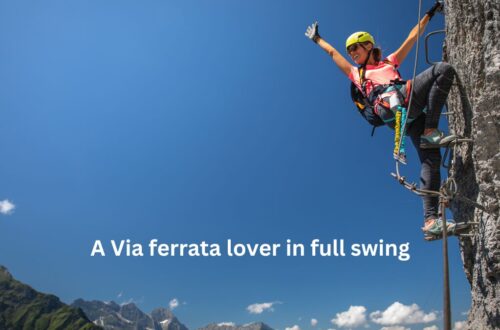Via Ferrata Speranței: A thrilling Journey Through the Bicaz Gorge
In the heart of Romania, where the Eastern Carpathians carve a deep and narrow limestone canyon, lies one of the country’s best climbing experiences: Via Ferrata Speranței, or the “Via Ferrata of Hope.” Suspended along the steep walls of the Bicaz Gorge, this route is a vertical adventure with natural grandeur, spiritual symbolism, and raw geological drama.

A Climb Into the Carpathians’ Heart
The Bicaz Gorge (Cheile Bicazului) is one of Romania’s most iconic landscapes. Massive cliffs rise hundreds of meters above a winding mountain road, threading through dense forests and narrow stone corridors. The gorge joins regions of Transylvania and Moldavia, slicing through the Hășmaș Mountains, part of the Eastern Carpathians.
Tucked into this rugged terrain is Via Ferrata Speranței, an exciting route that climbs one of the sheer limestone faces just above the main road. The name, “Speranței”, meaning “of hope,” pays homage to both the route’s soaring ascent and the climbers’ spirit.
An Overview of the Route
- Location: Bicaz Gorge (Cheile Bicazului), on the Harghita–Neamț County border
- Difficulty: Moderate (C/D level on the Hüsler scale)
- Time: 1.5 to 2 hours of climbing
- Elevation Gain: Approx. 200 meters
- Gear Required: Helmet, harness, via ferrata lanyard, gloves, and proper hiking shoes
It is not the longest or most technically difficult via ferrata in Romania but Speranței stands out for its spectacular vertical exposure, photogenic location, and easy accessibility — you can begin the approach just minutes from your car.
Click here to read about another Romanian Via Ferrata adventure.
The Climb: Vertical and Inspiring
The route begins close to the base of the gorge, where a modest sign marks the trailhead and a short forested path leads to the cliff wall. From the moment you clip into the steel cable, the verticality is immediate.
Section One: The First Wall
The climb starts with a steep vertical section that goes up a clean limestone face. Solid metal rungs and a fixed cable give constant protection, but the exposure ramps up quickly. Below, you hear the rush of the Bicaz River, while above, the cliff wall looms with ancient authority.
Climbers are rewarded early on with their first panoramic view of the gorge below — the twisting road, tiny cars, and mist rising from the forest.
Section Two: The Traverse
After the first climb, the route goes horizontally across the rock face. This is where the sense of scale becomes surreal: you’re clinging to the side of a sheer wall with hundreds of meters of air beneath your boots.
This portion of the route includes narrow ledges, iron ladders, and strategically placed holds. It offers moments of rest but never quite letting your pulse settle.
Section Three: The Upper Wall and Final Push
The final part is tougher and steeper, testing your endurance. The holds are secure, but you’ll need to trust your legs and keep your balance steady. The climb ends on a small plateau that feels like a secret lookout point known only to those who’ve earned it.
From here, the views over the Bicaz Gorge are magnificent: vertical walls on either side, green valleys stretching into the distance, and the peaceful silence of the Carpathian wilderness.
You need to be in good shape for Via Ferratas. Click here to turbocharge your health and fitness.

A Place of Natural Majesty and Cultural Depth
Climbing Via Ferrata Speranței is more than just a physical challenge — it’s a sensory and cultural experience rooted in the wild soul of Romania.
The Bicaz Gorge Landscape
Formed by millions of years of erosion, the Bicaz Gorge is a geological miracle. Its karst formations and vertical cliffs are some of the most striking in Eastern Europe. Birdsong echoes off stone walls, and the air is filled with the scent of pine and damp rock.
Nearby, you’ll find natural attractions like Lacu Roșu (Red Lake) — a mysterious, partially submerged forest lake created by a landslide in the 1800s, adding to the region’s fairytale-like atmosphere.
Spiritual Undertones
The gorge has long been a crossroads between faith and wilderness. Not far from the route, tucked into the cliffs and woods, are remote Orthodox monasteries and hermitages, some carved into the rock itself.
Climbers often speak of the peaceful aura at the top of the route — a moment of quiet reflection after the intense physical effort, suspended between earth and sky.
If you want to lose weight before your climb, click here.
Getting There
- The route is located directly off DN12C, the main road running through Bicaz Gorge.
- Closest towns: Bicaz, Gheorgheni, and Lacu Roșu.
- Parking is available nearby, with a short walk to the base.
Climbing Conditions
- Best time to climb: May through October.
- Avoid the route in rain or heavy fog — the limestone becomes slippery, and visibility is poor.
- The route is self-managed, meaning there are no rangers or permanent staff on-site.
Equipment
- Bring your own via ferrata kit or rent one in nearby towns like Bicaz or Gheorgheni.
- Gloves and good shoes make a big difference — the rungs can get cold and slick.
If you want a range of stylish, practical and outdoors appropriate menswear click here.
Nearby Attractions for Adventurers
If Via Ferrata Speranței whets your appetite for more outdoor exploration, the area has a lot more:
- Hike to Piatra Altarului: A dramatic viewpoint over the gorge.
- Explore Lacu Roșu: Rent a boat or hike around this surreal mountain lake.
- Try Other Via Ferratas: Nearby routes like Peretele Zânelor or Astragalus (in Cheile Șugăului) offer longer, more technical climbs.
Click here to for info about a fantastic selection of European adventures.
Final Thoughts: Climbing Hope
Via Ferrata Speranței may not be the longest or the most difficult via ferrata in Romania, but it’s arguably one of the most poetic. The route is vertical yet forgiving, thrilling yet accessible — ideal for those wanting to experience the exhilaration of exposure without needing elite-level climbing skills.
More than that, it immerses you in the wild beauty of the Carpathians. Each metal rung becomes a step deeper into nature, into history, and into yourself. And when you finally stand at the top, wind in your face, looking out across that epic gorge, you understand why this is called the Route of Hope.
Because up there, clinging to a cliff above the world, hope is exactly what you feel.

